Front Cover
Computer Organization and Design
Copyright Page
Acknowledgments
Contents
Preface
About This Book
About the Other Book
Changes for the Fifth Edition
Changes for the Fifth Edition
Concluding Remarks
Acknowledgments for the Fifth Edition
1 Computer Abstractions and Technology
1.1 Introduction
Classes of Computing Applications and Their Characteristics
Welcome to the PostPC Era
What You Can Learn in This Book
1.2 Eight Great Ideas in Computer Architecture
Design for Moore’s Law
Use Abstraction to Simplify Design
Make the Common Case Fast
Performance via Parallelism
Performance via Pipelining
Performance via Prediction
Hierarchy of Memories
Dependability via Redundancy
1.3 Below Your Program
From a High-Level Language to the Language of Hardware
1.4 Under the Covers
Through the Looking Glass
Touchscreen
Opening the Box
A Safe Place for Data
Communicating with Other Computers
1.5 Technologies for Building Processors and Memory
1.6 Performance
Defining Performance
Measuring Performance
CPU Performance and Its Factors
Instruction Performance
The Classic CPU Performance Equation
1.7 The Power Wall
1.8 The Sea Change: The Switch from Uniprocessors to Multiprocessors
1.9 Real Stuff: Benchmarking the Intel Core i7
SPEC CPU Benchmark
SPEC Power Benchmark
1.10 Fallacies and Pitfalls
1.11 Concluding Remarks
Road Map for This Book
1.12 Historical Perspective and Further Reading
1.13 Exercises
2 Instructions: Language of the Computer
2.1 Introduction
2.2 Operations of the Computer Hardware
2.3 Operands of the Computer Hardware
Memory Operands
Constant or Immediate Operands
2.4 Signed and Unsigned Numbers
Summary
2.5 Representing Instructions in the Computer
MIPS Fields
2.6 Logical Operations
2.7 Instructions for Making Decisions
Loops
Case/Switch Statement
2.8 Supporting Procedures in Computer Hardware
Using More Registers
Nested Procedures
Allocating Space for New Data on the Stack
Allocating Space for New Data on the Heap
2.9 Communicating with People
Characters and Strings in Java
2.10 MIPS Addressing for 32-bit Immediates and Addresses
32-Bit Immediate Operands
Addressing in Branches and Jumps
MIPS Addressing Mode Summary
Decoding Machine Language
2.11 Parallelism and Instructions: Synchronization
2.12 Translating and Starting a Program
Compiler
Assembler
Linker
Loader
Dynamically Linked Libraries
Starting a Java Program
2.13 A C Sort Example to Put It All Together
The Procedure swap
Register Allocation for swap
Code for the Body of the Procedure swap
The Full swap Procedure
The Procedure sort
Register Allocation for sort
Code for the Body of the Procedure sort
The Procedure Call in sort
Passing Parameters in sort
Preserving Registers in sort
The Full Procedure sort
2.14 Arrays versus Pointers
Array Version of Clear
Pointer Version of Clear
Comparing the Two Versions of Clear
2.15 Advanced Material: Compiling C and Interpreting Java
2.16 Real Stuff: ARMv7 (32-bit) Instructions
Addressing Modes
Compare and Conditional Branch
Unique Features of ARM
2.17 Real Stuff: x86 Instructions
Evolution of the Intel x86
x86 Registers and Data Addressing Modes
x86 Integer Operations
x86 Instruction Encoding
x86 Conclusion
2.18 Real Stuff: ARMv8 (64-bit) Instructions
2.19 Fallacies and Pitfalls
2.20 Concluding Remarks
2.21 Historical Perspective and Further Reading
2.22 Exercises
3 Arithmetic for Computers
3.1 Introduction
3.2 Addition and Subtraction
Summary
3.3 Multiplication
Sequential Version of the Multiplication Algorithm and Hardware
Signed Multiplication
Faster Multiplication
Multiply in MIPS
Summary
3.4 Division
A Division Algorithm and Hardware
Signed Division
Faster Division
Divide in MIPS
Summary
3.5 Floating Point
Floating-Point Representation
Floating-Point Addition
Floating-Point Multiplication
Floating-Point Instructions in MIPS
Accurate Arithmetic
Summary
3.6 Parallelism and Computer Arithmetic: Subword Parallelism
3.7 Real Stuff: Streaming SIMD Extensions and Advanced Vector Extensions in x86
3.8 Going Faster: Subword Parallelism and Matrix Multiply
3.9 Fallacies and Pitfalls
3.10 Concluding Remarks
3.11 Historical Perspective and Further Reading
3.12 Exercises
4 The Processor
4.1 Introduction
A Basic MIPS Implementation
An Overview of the Implementation
Clocking Methodology
4.2 Logic Design Conventions
4.3 Building a Datapath
Creating a Single Datapath
4.4 A Simple Implementation Scheme
The ALU Control
Designing the Main Control Unit
Operation of the Datapath
Finalizing Control
Why a Single-Cycle Implementation Is Not Used Today
4.5 An Overview of Pipelining
Designing Instruction Sets for Pipelining
Pipeline Hazards
Hazards
Data Hazards
Control Hazards
Pipeline Overview Summary
4.6 Pipelined Datapath and Control
Graphically Representing Pipelines
Pipelined Control
4.7 Data Hazards: Forwarding versus Stalling
Data Hazards and Stalls
4.8 Control Hazards
Assume Branch Not Taken
Reducing the Delay of Branches
Dynamic Branch Prediction
Pipeline Summary
4.9 Exceptions
How Exceptions Are Handled in the MIPS Architecture
Exceptions in a Pipelined Implementation
4.10 Parallelism via Instructions
The Concept of Speculation
Static Multiple Issue
An Example: Static Multiple Issue with the MIPS ISA
Dynamic Multiple-Issue Processors
Dynamic Pipeline Scheduling
Energy Efficiency and Advanced Pipelining
4.11 Real Stuff: The ARM Cortex-A8 and Intel Core i7 Pipelines
The ARM Cortex-A8
The Intel Core i7 920
Performance of the Intel Core i7 920
4.12 Going Faster: Instruction-Level Parallelism and Matrix Multiply
4.13 Advanced Topic: an Introduction to Digital Design Using a Hardware Design Language to Describe and Model a Pipeline and Mo…
4.14 Fallacies and Pitfalls
4.15 Concluding Remarks
4.16 Historical Perspective and Further Reading
4.17 Exercises
5 Large and Fast: Exploiting Memory Hierarchy
5.1 Introduction
5.2 Memory Technologies
SRAM Technology
DRAM Technology
Flash Memory
Disk Memory
5.3 The Basics of Caches
Accessing a Cache
Handling Cache Misses
Handling Writes
An Example Cache: The Intrinsity FastMATH Processor
Summary
5.4 Measuring and Improving Cache Performance
Reducing Cache Misses by More Flexible Placement of Blocks
Locating a Block in the Cache
Choosing Which Block to Replace
Reducing the Miss Penalty Using Multilevel Caches
Software Optimization via Blocking
Summary
5.5 Dependable Memory Hierarchy
Defining Failure
The Hamming Single Error Correcting, Double Error Detecting Code (SEC/DED)
5.6 Virtual Machines
Requirements of a Virtual Machine Monitor
(Lack of) Instruction Set Architecture Support for Virtual Machines
Protection and Instruction Set Architecture
5.7 Virtual Memory
Placing a Page and Finding it Again
Page Faults
What about Writes?
Making Address Translation Fast: the TLB
The Intrinsity FastMATH TLB
Integrating Virtual Memory, TLBs, and Caches
Implementing Protection with Virtual Memory
Handling TLB Misses and Page Faults
Summary
5.8 A Common Framework for Memory Hierarchy
Question 1: Where Can a Block Be Placed?
Question 2: How is a Block Found?
Question 3: Which Block Should Be Replaced on a Cache Miss?
Question 4: What Happens on a Write?
The Three Cs: An Intuitive Model for Understanding the Behavior of Memory Hierarchies
5.9 Using a Finite-State Machine to Control a Simple Cache
A Simple Cache
Finite-State Machines
FSM for a Simple Cache Controller
5.10 Parallelism and Memory Hierarchy: Cache Coherence
Basic Schemes for Enforcing Coherence
Snooping Protocols
5.11 Parallelism and Memory Hierarchy: Redundant Arrays of Inexpensive Disks
5.12 Advanced Material: Implementing Cache Controllers
5.13 Real Stuff: The ARM Cortex-A8 and Intel Core i7 Memory Hierarchies
Performance of the A8 and Core i7 Memory Hierarchies
5.14 Going Faster: Cache Blocking and Matrix Multiply
5.15 Fallacies and Pitfalls
5.16 Concluding Remarks
5.17 Historica Perspective and Further Reading
5.18 Exercises
6 Parallel Processors from Client to Cloud
6.1 Introduction
6.2 The Difficulty of Creating Parallel Processing Programs
6.3 SISD, MIMD, SIMD, SPMD, and Vector
SIMD in x86: Multimedia Extensions
Vector
Vector versus Scalar
Vector versus Multimedia Extensions
6.4 Hardware Multithreading
6.5 Multicore and Other Shared Memory Multiprocessors
6.6 Introduction to Graphics Processing Units
An Introduction to the NVIDIA GPU Architecture
NVIDIA GPU Memory Structures
Putting GPUs into Perspective
6.7 Clusters, Warehouse Scale Computers, and Other Message-Passing Multiprocessors
Warehouse-Scale Computers
6.8 Introduction to Multiprocessor Network Topologies
Implementing Network Topologies
6.9 Communicating to the Outside World: Cluster Networking
6.10 Multiprocessor Benchmarks and Performance Models
Performance Models
The Roofline Model
Comparing Two Generations of Opterons
6.11 Real Stuff: Benchmarking and Rooflines of the Intel Core i7 960 and the NVIDIA Tesla GPU
6.12 Going Faster: Multiple Processors and Matrix Multiply
6.13 Fallacies and Pitfalls
6.14 Concluding Remarks
6.15 Historical Perspective and Further Reading
6.16 Exercises
Appendix A: Assemblers, Linkers, and the SPIM Simulator
A.1 Introduction
A.2 Assemblers
A.3 Linkers
A.4 Loading
A.5 Memory Usage
A.6 Procedure Call Convention
A.7 Exceptions and Interrupts
A.8 Input and Output
A.9 SPIM
A.10 MIPS R2000 Assembly Language
A.11 Concluding Remarks
A.12 Exercises
Appendix B: The Basics of Logic Design
B.1 Introduction
B.2 Gates, Truth Tables, and Logic Equations
B.3 Combinational Logic
B.4 Using a Hardware Description Language
B.5 Constructing a Basic Arithmetic Logic Unit
B.6 Faster Addition: Carry Lookahead
B.7 Clocks
B.8 Memory Elements: Flip-Flops, Latches, and Registers
B.9 Memory Elements: SRAMs and DRAMs
B.10 Finite-State Machines
B.11 Timing Methodologies
B.12 Field Programmable Devices
B.13 Concluding Remarks
B.14 Exercises
Index

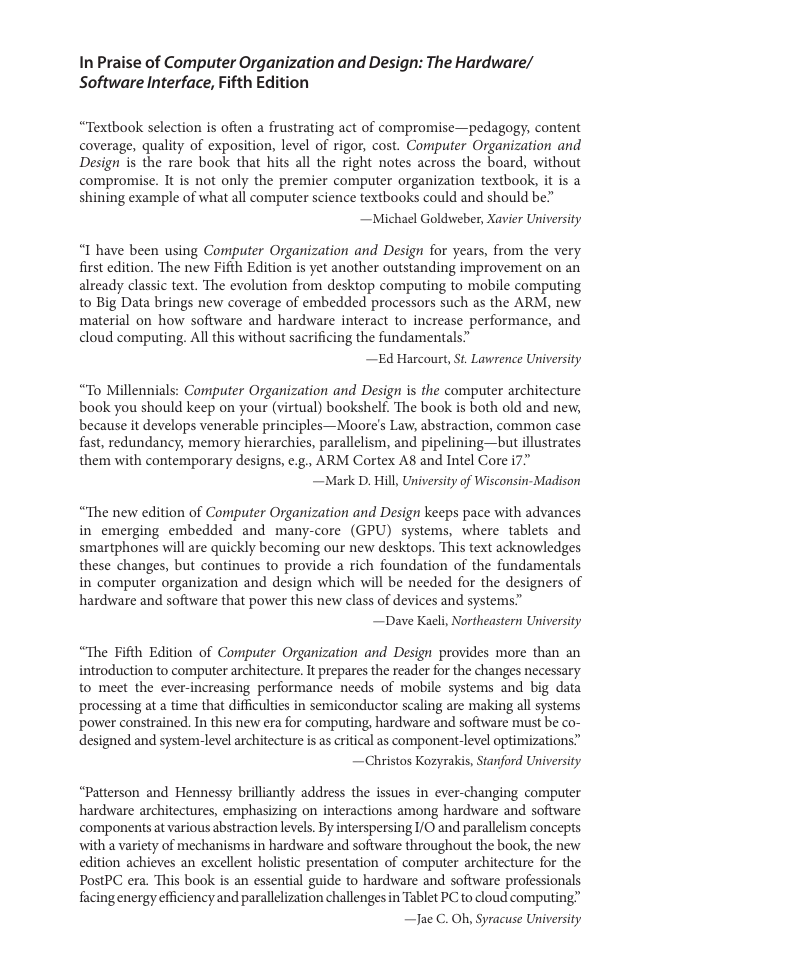

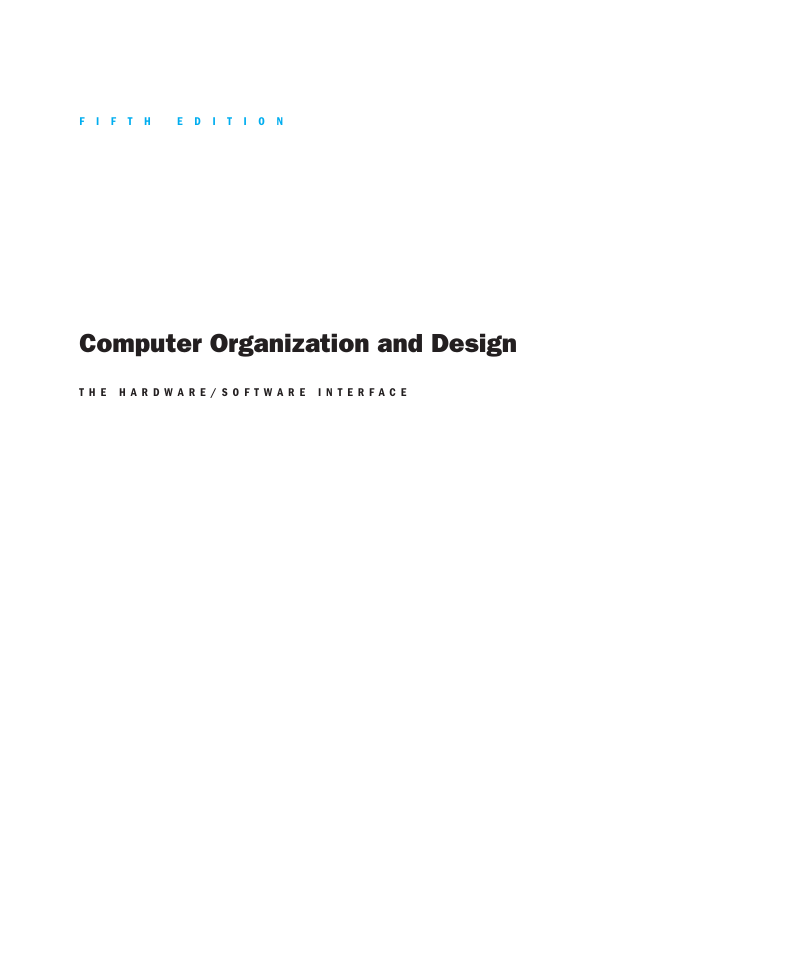
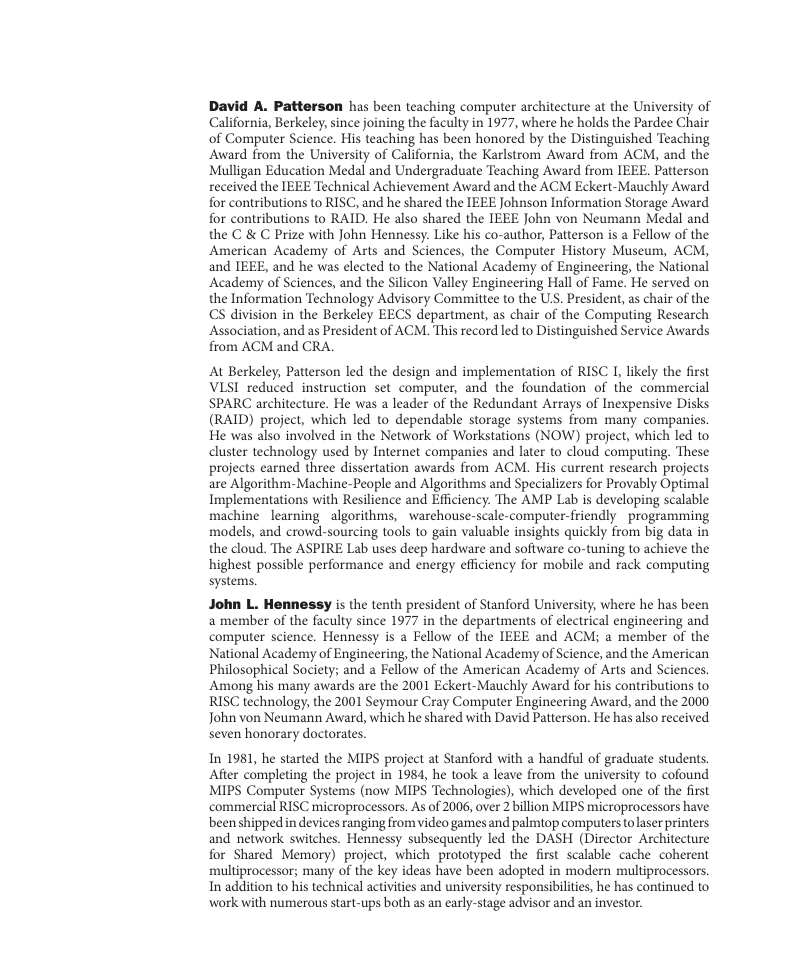
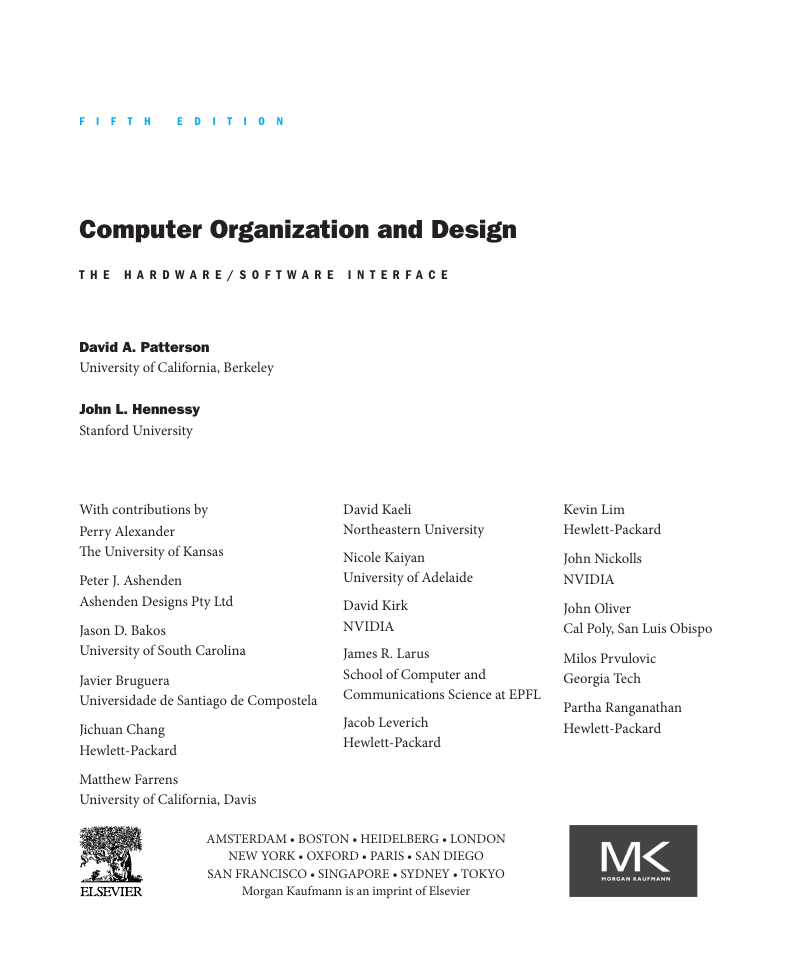
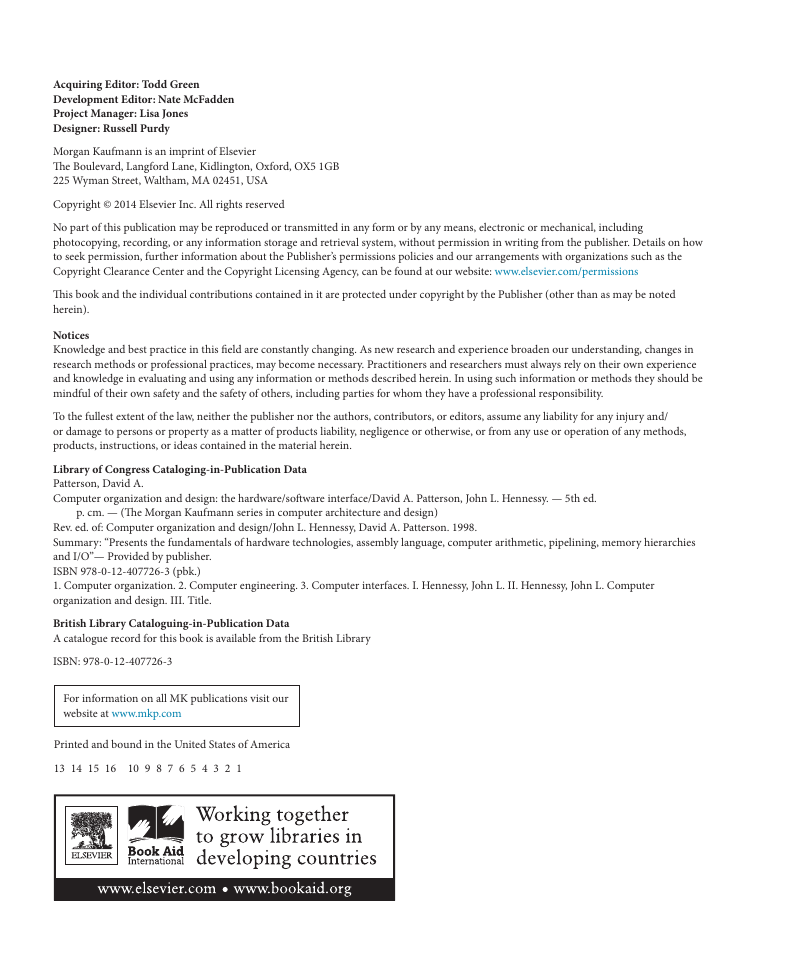









 2023年江西萍乡中考道德与法治真题及答案.doc
2023年江西萍乡中考道德与法治真题及答案.doc 2012年重庆南川中考生物真题及答案.doc
2012年重庆南川中考生物真题及答案.doc 2013年江西师范大学地理学综合及文艺理论基础考研真题.doc
2013年江西师范大学地理学综合及文艺理论基础考研真题.doc 2020年四川甘孜小升初语文真题及答案I卷.doc
2020年四川甘孜小升初语文真题及答案I卷.doc 2020年注册岩土工程师专业基础考试真题及答案.doc
2020年注册岩土工程师专业基础考试真题及答案.doc 2023-2024学年福建省厦门市九年级上学期数学月考试题及答案.doc
2023-2024学年福建省厦门市九年级上学期数学月考试题及答案.doc 2021-2022学年辽宁省沈阳市大东区九年级上学期语文期末试题及答案.doc
2021-2022学年辽宁省沈阳市大东区九年级上学期语文期末试题及答案.doc 2022-2023学年北京东城区初三第一学期物理期末试卷及答案.doc
2022-2023学年北京东城区初三第一学期物理期末试卷及答案.doc 2018上半年江西教师资格初中地理学科知识与教学能力真题及答案.doc
2018上半年江西教师资格初中地理学科知识与教学能力真题及答案.doc 2012年河北国家公务员申论考试真题及答案-省级.doc
2012年河北国家公务员申论考试真题及答案-省级.doc 2020-2021学年江苏省扬州市江都区邵樊片九年级上学期数学第一次质量检测试题及答案.doc
2020-2021学年江苏省扬州市江都区邵樊片九年级上学期数学第一次质量检测试题及答案.doc 2022下半年黑龙江教师资格证中学综合素质真题及答案.doc
2022下半年黑龙江教师资格证中学综合素质真题及答案.doc